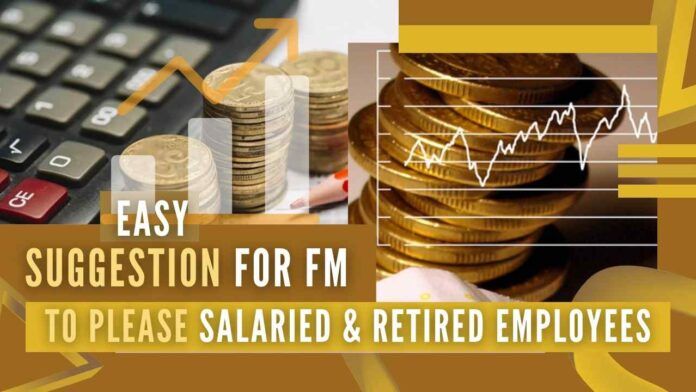
Why Govt should think about salaried & retired employees?
I have given several suggestions for the Modi government through PGurus so far. A few of them have been implemented; whether they were implemented based on my suggestions or the government was anyway contemplating them, I wouldn’t know. We, as citizens, should keep giving suggestions, hoping someday, some of these may be implemented.
The current set of suggestions is fairly easy to implement since they will benefit the salaried and retired people, at no cost to the government. As a result, BJP is likely to benefit in the elections too.
EPFO invests employees’ PF funds in safe instruments and offers interest for the EPF scheme on a yearly basis. The rate of interest is dependent on the market conditions and is vetted by the Finance Ministry, and for the FY 2020-21, it was 8.5%. Employees always want better interest rates.
Most retired employees invest their savings in bank FDs whose interest rates have been low in recent years (around the 4-5% range). This is one of the biggest grouses of retired employees against the Modi Government. Since they depend almost wholly on interest-earning, they find it difficult to make ends meet; they expect interest in the PF range.
Typical ROI on Equity Mutual Funds is well above 12%, on an average 15 to 18% for long-term investment. Typical ROI on Balanced Mutual Funds (mix of Equity and Debt Funds) is around 9%.
The government can permit retired employees to invest their savings in a set of private Balanced Mutual Funds, setting a limit (say Rs.25 lakhs) if the government wants, and the funds should underwrite a certain minimum ROI (say, 8.5%, call it interest or dividend, payable monthly). The retired employees may be allowed to select the private fund of their choice.
In return for underwriting the minimum ROI, the Private Fund Managers may be allowed to charge a premium fee as their fund management fee. Details of this can be worked out, ensuring that the fund cannot fail to perform in any year.
Due to competition, the funds will actually maximize the returns for the investors. It will most likely be close to EPF interest, payable monthly. Taxation rules can be applicable to Mutual Funds, which will be not taxable for over a year. This is similar to ELSS (Equity Linked Savings Scheme).
An extension of this idea is to let employees invest a certain part (say 25%) of their EPF amount in specified Equity Mutual Funds, similar to or the same as ELSS. This will fetch better returns over a long period, though there may be ups and downs on a year-on-year basis. The payouts to employees can be governed by the EPFO rules.
Over time, employees will understand the relative advantage of investing in equity markets, which will help the economy overall, and develop an equity investment culture among the lowest of income-earning employees.
Note:
1. Text in Blue points to additional data on the topic.
2. The views expressed here are those of the author and do not necessarily represent or reflect the views of PGurus.
PGurus is now on Telegram. Click here to join our channel and stay updated with all the latest news and views
For all the latest updates, download PGurus App.
- How BJP can get 33%+ vote share in TN - April 1, 2024
- A transparent, equitable electoral funding alternative - March 19, 2024
- How TN BJP can come to No. 1 or No. 2 in 2024 LS polls - January 11, 2024










